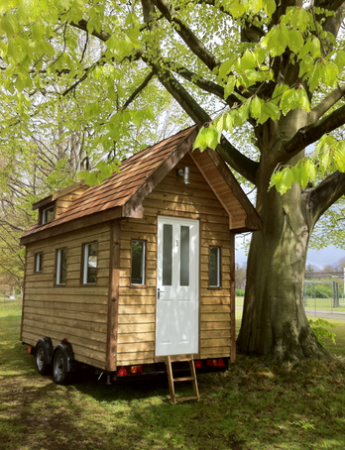
Tiny homes have been gaining popularity recently, and many property owners are considering building one. But before you take the plunge, it’s essential to understand all the pros and cons of this type of project. Before deciding if building a tiny home on your property is right for you, let’s look at what you should know.
Pros Of Building Tiny Homes On Your Property
The first major benefit of building a tiny home is that it can act as an additional source of income. A tiny home is an excellent option if you’re looking for ways to supplement your current income or potentially expand your business into renting out properties. You can rent it out to travellers, tourists, or even long-term tenants looking for a more affordable living option.
Another benefit is that you don’t need to worry about zoning laws like you would with other structures on your property. Tiny homes are often mobile and self-contained, meaning building codes don’t need to be adhered to. Furthermore, these micro-homes may not legally be classified as residential dwellings since they don’t provide full plumbing and electricity services like a normal-sized home. This leeway means that many aspiring tinies successfully avoid zoning regulations altogether. With this piece of mind, people can finally realise their dreams of living in a tiny but efficient house without dreading potential zoning restrictions.
Finally, tiny homes are generally much more energy-efficient and sustainable than bigger homes because they have smaller heating and cooling needs and use fewer materials during construction. They also offer a unique living experience for those looking to downsize their lifestyles and reduce their ecological footprints. Not only are these dwellings considerably more affordable and require less energy to heat and cool, but they also occupy much less physical space and are built using sustainable materials. This can mean decreased costs in taxes, utility bills, land purchases, and building and maintenance fees, making them the perfect solution for anyone interested in an affordable, energy-efficient living solution. By limiting the size of their homes, people can reduce their environmental impact while still enjoying a comfortable lifestyle full of luxuries they can afford.
Cons Of Building Tiny Homes On Your Property
One potential downside of building a tiny home is that it won’t provide nearly as much square footage as other structures on your property—making it less suitable for large families or groups of people visiting occasionally. Additionally, some local governments may not allow permanent occupancy in a tiny home, so you may be limited in how long someone can stay there at any time. If you need extra storage or workspace, you’ll likely have to find an external solution like renting a storage unit or building separate outdoor structures. Tiny homes are a viable way of life for some, but inevitable tradeoffs come with downsizing that should be considered before embarking on such a project.
Another downside is that building a tiny home is expensive compared to other projects, such as adding an extra room or garage onto an existing structure on your property. Building materials such as framing lumber, roofing, siding and interior finishes tend to cost more per square foot than larger homes due to their smaller size. Further, if you plan on having the tiny home include any necessities such as plumbing and electrical wiring, it can be even more expensive. This means that while there may be some financial benefits associated with renting out the space, these benefits will likely take longer to realize than with other projects due to the initial cost involved in constructing the tiny house itself.
You should also be aware that making changes to your property could impact your homeowner’s insurance. Depending on how you use the tiny home and even the materials used in its construction, you may need to adjust or purchase additional coverage for these dwellings. You’ll want to contact your insurance provider before building any type of dwelling on your property, so you can understand what kind of protection they will offer if something happens to it. Knowing precisely what kind of coverage applies to each structure on your property can help keep you fully covered in an emergency.
Building a tiny home on your property can offer numerous benefits, including extra income potential, reduced zoning requirements, and increased energy efficiency—but there are also downsides, such as higher initial construction costs and limited square footage for larger groups or families. Ultimately, whether this type of project is right for you will depend mainly on your budget and needs and any local regulations regarding occupancy times for short-term rentals or permanent housing arrangements. But if done correctly, investing in a quality build could pay off over time if done correctly!




 POSTED BY
POSTED BY 

